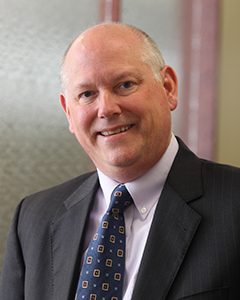2020: The Year That Was

Every year is a notable one for various reasons, but 2020 certainly will go down in the history books as one of our most momentous. The COVID-19 crisis; widespread protests over racial and social inequality; and the contentious November elections (with control of the U.S. Senate still undecided) were just a handful of the stories that made headlines this year.
And there were plenty of significant developments for the retirement industry as well – many of them, of course, tied to the pandemic. Here is a look back at a few of those events that helped make this such an extraordinary year.
To truly assess 2020, we actually need to go back to the Setting Every Community Up for Retirement Enhancement (SECURE) Act, which was signed into law on December 20, 2019. This has truly been a game-changer; SECURE benefits both employers and employees by providing administrative relief along with expanded retirement plan coverage and increased savings opportunities to improve retirement security.
We have a full menu of coverage of SECURE here; I would re-emphasize that mandatory plan amendments to cover SECURE Act changes will go into effect for most plans during the 2022 plan year.
The first signs of a recorded instance of COVID in the U.S. arrived on January 20, when a patient in Washington state was diagnosed. As you will doubtless recall, that set off a few alarm bells, but within a few weeks it was obvious that COVID represented a much greater threat than originally thought. On March 13, President Donald Trump declared COVID a national emergency, followed in short order by travel bans and stay-at-home orders in a number of states.
With the economy teetering and the future uncertain, Congress passed the $2.2 trillion Coronavirus Aid, Relief, and Economic Security (CARES) Act, an unprecedented economic stimulus bill, which was signed into law on March 27. In addition to one-time cash payments to qualifying individuals and families, increased unemployment benefits, and the creation of the Paycheck Protection Program (PPP) to help prop up struggling small businesses, the CARES Act had a number of implications for those saving for retirement.
Those included the suspension of required minimum distributions from traditional Individual Retirement Accounts (IRAs) and employer-sponsored retirement plans for 2020; waiving the 10% tax penalty for early distributions from 401(k), 403(b), 457(b) plans and IRAs, under certain circumstances; and increasing the maximum amount of a loan from an employer-sponsored 401(k) plan, from the lesser of $50,000 or 50% of the plan participant’s vested assets to the lesser of $100,000 or 100%.
A full menu of CARES Act-related information can be found here.
There have been numerous changes and clarifications to the above by the Internal Revenue Service (IRS) and U.S. Department of Labor, not to mention some noteworthy moves when it comes to Environmental, Social, and Corporate Governance (ESG) investing and rolling over qualified plan loan offset (QPLO) amounts, among others.
One other major development of note is the Securing a Strong Retirement Act (SSRA) of 2020. Also known as “SECURE 2.0,” it would among other things create a new financial incentive for small businesses to offer retirement plans, and provide those aged 60 and older with more flexibility to set aside savings as they approach retirement. (More on SSRA can be found here.)
Although chances of the SSRA being passed by Congress this year seem dim, the bill’s co-sponsor and House Ways & Means Committee Chairman Richard Neal (D-MA) has said he expects to reintroduce it in the next Congress, which convenes on January 3. We remain very enthusiastic about what the SSRA can do; as we wrote earlier this month, “SSRA represents a win for every side when it comes to saving for retirement.”
And with that, I wish you a very happy and prosperous – and COVID-free – new year.
About the Author
